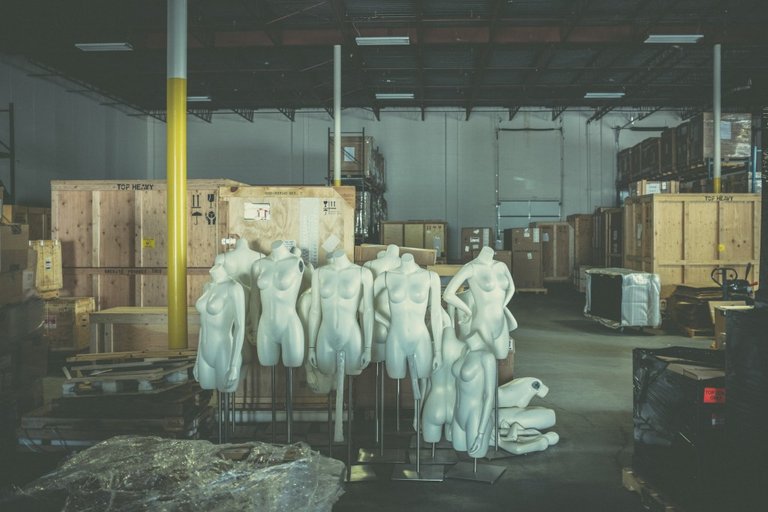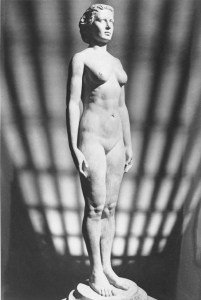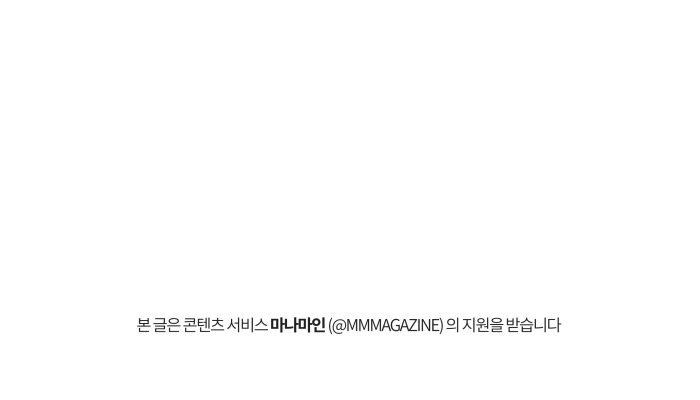[Korean Version: 이상적 혹은 평균 몸매에 대한 허상]

We unconsciously accept ‘ideal or standard body shape’ prevalent in society without a doubt or a question. However, such body shapes don’t exist.
Let’s start with the illusion of mannequin, one of the representatives of visual symbols.
Mannequin Body Fantasy
Mannequin represents human fantasy. Its figure follows the aesthetic standards of contemporary people. In other words, it visualizes an ideal body shape of each age and the natural body of real women is covered by it.
The average height of Korean women in their early 20s is 161cm, and the waist measurement is 71cm. On the other hand, the height of mannequin is in between 175cm and 180cm, and its waist measurement is about 63cm, which are very different from the body of real women. This unrealistic figure of mannequin seems to force the women to pursuit such body shape.

Countries in Europe have already recognized the issue and started kicking out mannequins that could give a distorted view of women’s body as they realized such figure far from the average body infringes on people’s health rights. Recently, mannequins with the figure of general women have appeared in department stores in Sweden and England, and earned a lot of positive responses. It’s a positive attempt to broaden magnanimity towards the human body. In reality, medical experts warn that constant exposure to a mannequin figure may bring a misrepresent standard of beauty, which can result in obsessive-compulsive disorder for losing weight or eating disorder.
Now, let’s go deeper. Then, what does the average body shape and measurement we’ve accepted without thinking so far mean? To tell the truth, average data means ‘nothing’ to an individual. Let’s take a look at these two cases.
Case 1. Find a Resemblance of ‘Norma’, Average American Body Figure
An American local newspaper 《Cleveland Plain Dealer》held a contest to find a Norma resemblance in 1945. Norma was a statue made of the average body size of 15,000 young women at that time. They wanted to find a human Norma in real life.
The scientists of that day believed that Norma, which is the average value produced by large-scale data, would be a useful guide for understanding the general body shape of women. Even Cleveland Museum of Natural History, the place exhibited Norma, sold a miniature sculpture and promoted it as an epitome of women’s body shape. Physical education teachers at that time also made Norma an ideal appearance for young women and encouraged students to exercise if they didn’t have Norma’s body figure.

The judges anticipated a difference in millimeters would determine the winner as they believed the contestants would have similar body measurements to the average. However, when the contest began, their prediction was totally missed. Even among the 5 out of 9 items, only less than 40 out of 3,864 women were on average and there was no woman who was on average for all 9 items. In other words, ‘human Norma’ with the average body shape didn’t exist.
Case 2. Find the Average Pilot of the US Air Force
The US Air Force encountered a serious setback in the late 1940s due to the frequent aircraft crashes. While it wasn’t the pilots’ fault nor a mechanical defect, it’s been argued that the cockpit made of the average body size of a pilot over 20 years ago may be the cause of the accident. Therefore, in 1950, they conducted the largest ever physical survey from more than 4,000 pilots in Wright-Patterson Air Force Base located in Ohio. Over 140 items were measured and average measurements were calculated.
Almost everyone was convinced that a new cockpit with the updated measurements would prevent the crashes except for a military researcher Gilbert S. Daniels. He wondered how many pilots would be on average. He picked out the 10 most relevant items to the cockpit design and analyzed how many pilots are on average. His coworkers expected the majority of the pilots would be on average before they saw the result. However, it was rather shocking that none of the pilots matched with the average of the 10 items. Some of them had longer arms and shorter legs than the average, and others had wider chest circumference and narrower hip circumference than the average. In other words, there was no ‘average pilot’ that a cockpit with an average pilot’s body measurements would fit in.
Many people fall into a trap of judging their bodies based on mannequins or standard body measurements. They even abuse their bodies to become like them. We must realize the extreme diversity of body dimensions through the above two cases. The average measurements based on large data is useless to understand the body of an individual, which means that you don’t have to be happy or sad for having longer legs or a thicker waist. The average body size is just an illusion as far as your body’s concerned.
Use of Standard Body Size
But that doesn’t mean the standard body size is useless at all. For example, it can be useful when comparing two different groups. Below image visualizes average body of males in their 30s in each country. It shows how we can make a good use of the standard body size when comparing and analyzing body types or nutritive conditions for each country.
.png)
Nevertheless, Average Body is Not the Body of Anyone
It’s not an empty word or a consolation, but a proven scientific fact.
We must not only reject the illusion of the monstrous ‘mannequin’ produced by the fashion industry but also refuse to compare our body with the scientific ‘average figure’ data because the fantasy of mannequin body and standard body figure are false information for each individual. Nobody is average. Thus, we should accept our body as it is and cherish it.
Someone says all value judgment comes from comparison. Let’s exclude our body from that. Our one and only body is just too precious to be compared to an illusion.
References
- 김홍기. (2016). 옷장 속 인문학. 중앙북스.
- 임태우. (2017). 여성이 마네킹?…”사이즈 XS·XXL 다 갖춘 브랜드는 1곳뿐”. Retrieved from https://news.sbs.co.kr/news/endPage.do?news_id=N1004315718&plink=COPYPASTE&cooper=SBSNEWSEND
- MBC 뉴스. (2013). ’66사이즈, 77사이즈’‥정직한 마네킹 인기. Retrieved from http://imnews.imbc.com/weeklyfull/weekly04/3257947_17957.html
- The University of Texas at Austin. (2018). Body Image. Retrieved from https://www.healthyhorns.utexas.edu/n_bodyimage.html
- Rose, T. (2017). The End of Average: Unlocking Our Potential by Embracing What Makes Us Different. HarperOne.
- Hamblin, J. (2013). This Is the Average Man’s Body. Retrieved from https://www.theatlantic.com/health/archive/2013/10/this-is-the-average-mans-body/280194/

Very interesting, thanks for sharing this article!
No problem! ;)
Thanks for this one!
My pleasure :)